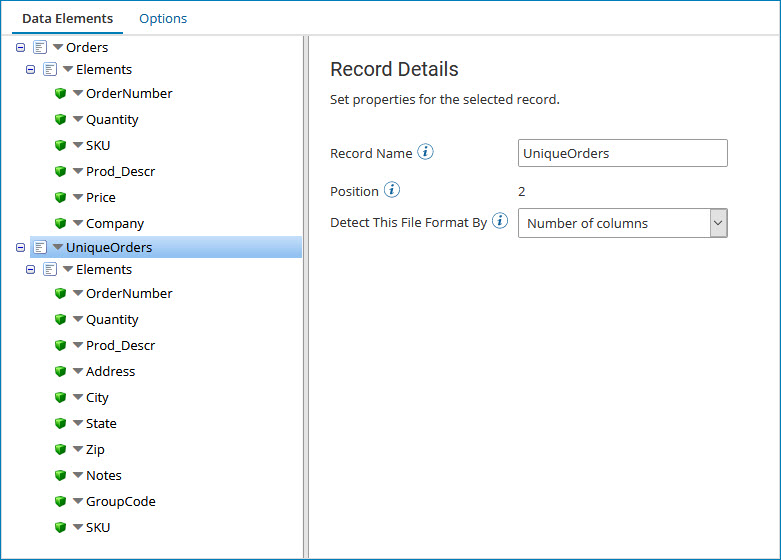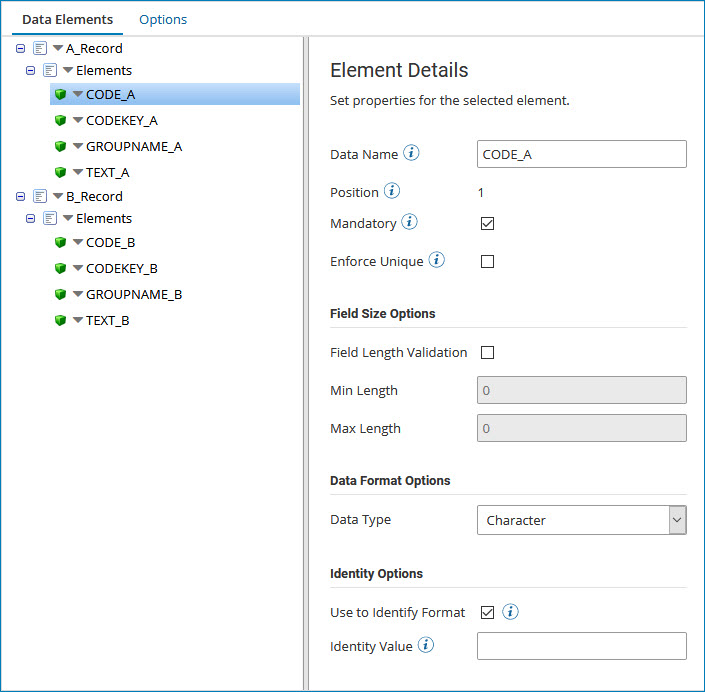Flat file record format detection
The record format is configured on the record node and is determined either by the number of columns or by a specified unique value in the "Identity Value" element.
The sample data set below contains two record formats, each with a different number of columns. The first and third lines have six columns, whereas the second and fourth rows have 10 columns.
Order573*20*376f972*Ntwk Adpt*29.99*Company A
UniqueOrder675*40*Wireless Card*801 Cassatt Road*Berwyn*PA*19312*Call Tech Support Immediately*97G45E*sku4513
Order574*10*5247rt*Headphones*15.75*Company B
UniqueOrder676*25*Wireless Card*Address Unknown*NA*NA*NA*Call Tech Support Immediately*97G45E*sku4513
...

The sample data set contains two record formats. Although both have four columns, the first column contains a value that identifies the type of record (either "A" or "B").
A,KEYN9R,5790,BATCH 5212
A,KEYN9R,5791,BATCH 5215
A,KEYN9R,5792,BATCH 5218
B,DZNP7T,4752,BATCH 4759
B,DZNP7T,4753,BATCH 4761
B,DZNP7T,4754,BATCH 4763
In the profile, the first element of each record format is configured to Use to Identify Format and the Identity Value of "A" or "B" is specified, respectively.

In a Map component, the multiple record formats configured in the Profile are available to map to and from.

